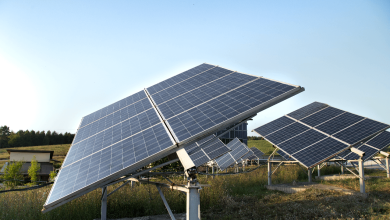Is Apple’s Supply Chain Making Climate Change Worse?

In the epic battle against climate change, Apple Inc. emerges as a gallant knight, brandishing its commitment to environmental sustainability like a shining sword. Tim Cook, the modern-day steward of this tech kingdom, vows to vanquish carbon emissions across every facet of Apple’s empire by 2030.
Yet, an intricate tapestry unravels when we peer beneath the surface: the very regions housing Apple’s sprawling manufacturing supply chain now stand on the precipice of climate chaos.
In this story, Apple’s supply chain sprawls like a phoenix across 400-plus sanctuaries, a web of complexity spanning 180 diverse realms in almost 30 kingdoms, with Asia as its epicenter.
While the corporation has gallantly fought to quell its carbon demons, these realms, from the mystic lands of India to the enigmatic shores of Japan, find themselves besieged by nature’s wrath, intensified by the changing climate.
It is a paradox – a corporate knight leading the charge against climate change while its castle’s foundations crumble in the face of impending disaster. Flooding, relentless heatwaves, and monstrous cyclones threaten to lay waste to the manufacturing sanctuaries that sustain Apple’s technological kingdom.
But our tale isn’t confined to the whims of nature; it is a financial odyssey as well. Researchers foretell economic tempests in lands where Apple forages for its treasures – India, Indonesia, the Philippines, Malaysia, and Cambodia.
The tempests may shake the global economy, leaving no corner untouched, as Apple and its rivals, entangled in the same supply chain web, face the financial ghosts of climate change.
Where the Problem Begins
A journey into history reveals a tale of despair. In the year 2011, the great floods of Thailand, spurred by the elusive La Niña, cast a shadow over 14,000 businesses. A spell of doom engulfed the automotive and electronics realms, paralyzing supply chains that once thrived on low-cost manufacturing near the capital city of Bangkok. Apple’s cherished Mac computers languished as supply chain threads unraveled.
Power outages, a menacing specter, emerge as another foe. Hotter summers, the voracious appetite for air conditioning, erratic rains, and the weariness of ancient, unprofitable coal-fired guardians threaten electricity realms.
China’s Yunnan province, in an arcane tale, stilled the forges producing aluminum, akin to that found in Apple’s prized iPhones, due to a drought’s insatiable thirst for hydroelectric power. India’s grid, a fragile tapestry, teetered on the edge during a scorching heatwave, rendering coal-fired generators impotent.
The future, shrouded in mystery, conceals the confluence of power sources most vulnerable to nature’s caprices. Apple’s noble quest to imbue its manufacturing network with zero-carbon vigor by 2030 meets the enigma of nations dependent on fossil flames.
Countries vital to Apple’s cause possess grids intoxicated by coal’s dark allure, with China and Indonesia drowning in it, while India’s soul is almost consumed.
In an age where carbon-conscious nations brandish levies on carbon-intensive treasures, the European Union heralds a new dawn. Beginning in October 2023, the Union imposes carbon-based tributes on energy-rich ores.
The scales of justice aim to balance the carbon ledger, trading at €84 ($89) per metric ton. Alas, this may dim the luster of goods fashioned in carbon-rich realms, leaving Apple’s suppliers at the precipice of change, with remaking costs echoing through time.
How can Apple Affect Climate Change?
The climate symphony is far from over. Echoes of carbon leakage resound in realms that birth Apple’s treasures, where production might seek refuge in regions of lax emission scrutiny. The storm may traverse the oceans to reach the shores of Australia, where trade becomes an emissary of climate resolve, and the halls of the U.S. Congress where similar whispers of climate tariffs stir.
In this tableau, the narrative transcends Apple; it becomes a parable of our age. Tim Cook, the architect of a global production renaissance, now confronts the challenges of a warming world, a world shaped by his own creation. The gears of urbanization, rising affluence, and insatiable energy thirst that turned nations into Apple’s workbenches now churn towards a perilous future.
ALSO READ: What is Renewable Energy?
Apple, in its admirable journey to alleviate its carbon sins, faces the age-old riddle – can it shield itself from the impending storms of climate change, in a world both chaotic and unpredictable? The answer, my friends, may lie not in reducing the carbon footprint alone, but in reshaping its very foundations to withstand the fiery trials of a warming world.
Thus, Apple’s destiny intertwines with the Earth’s fate in a story where sustainability meets survival.



